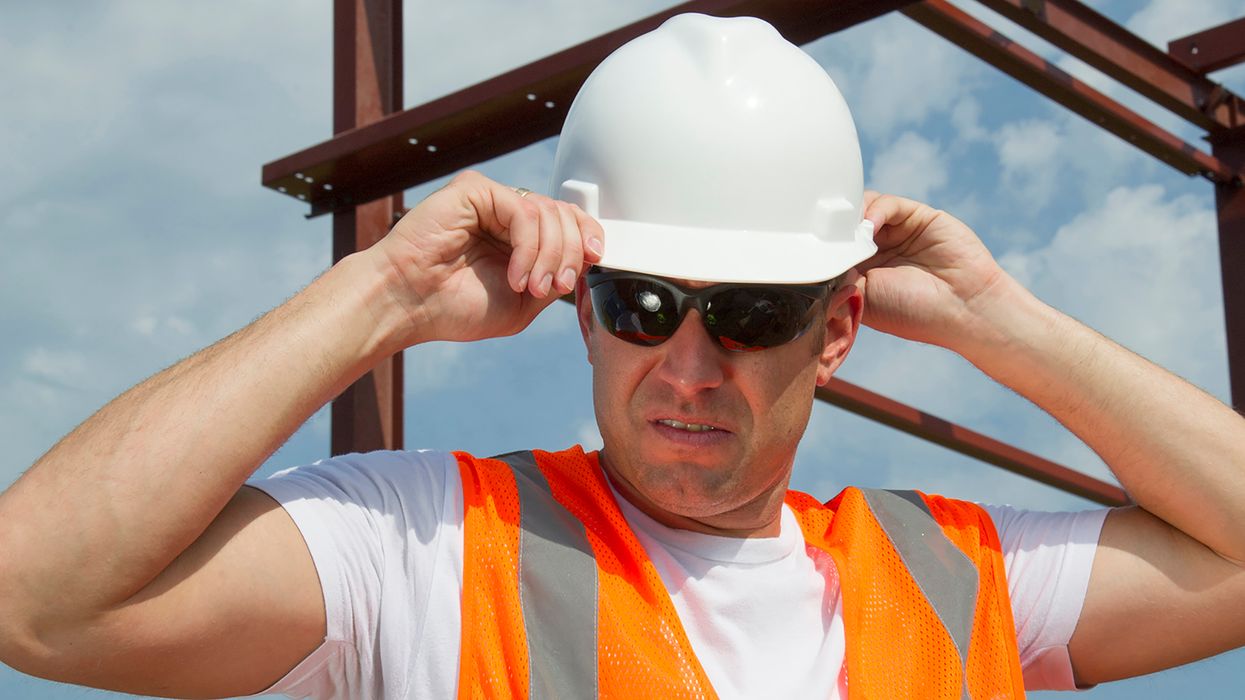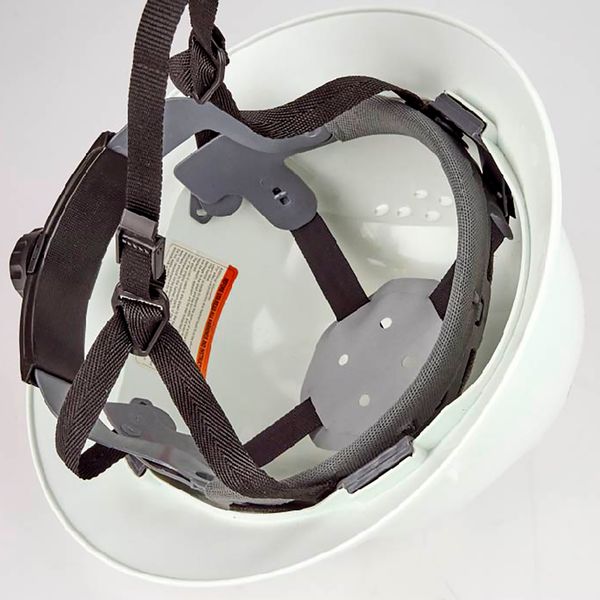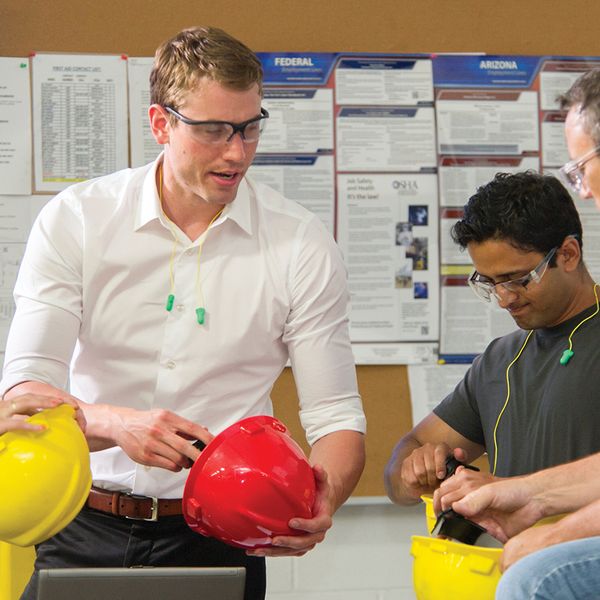What types of head protection must your workers wear?
OSHA citations stemming from the lack of performing personal protective equipment (PPE) assessments or from workers not wearing PPE, like hard hats, are common issues across industries. OSHA recently cited an employer in February 2023 because its workers were not wearing hard hats while performing demolition work. In a February News Release, OSHA reminds employers to “make sure employees [use] personal protective equipment including ... hard hats.”
Head injuries from contact hazards, dropped objects, and electrical exposure are real hazards in your workplace. Small things, even small nickel-sized objects, can cause serious injuries to your workers’ heads, faces, or bodies. Properly wearing a hard hat can protect workers from injury. It protects workers’ heads if they bump into an object. Employers must select the proper type and class of hard hats to use. Employers might allow workers to wear a bump cap if no falling object hazards exist.
OSHA requires head protection to meet the ANSI Standard Z89.1. Manufacturers must also test hard hats for impact attenuation and penetration resistance. The shell is designed to withstand a 40-foot-pound impact to the top of the hard hat.
Why should workers wear head protection?
If your workers are required to wear a hard hat, it’s because head hazards remain after you’ve implemented specific engineering and safety controls to protect them. Employers must figure out what type of hard hat is needed. Workers must follow their employer’s hard hat selections and instructions.
Injuries from falling objects and electrical hazards can seriously injure or kill your workers. Head injuries and shock can cause disabling injuries. The brain is the computer system that regulates and controls the body. If it’s damaged, it can’t function properly, affecting the quality of life. So, why wouldn’t workers wear a hard hat?
Are there different types of head protection ratings?
Hard hats will have a Type I or Type II rating on the manufacturer’s sticker. These markings are based on ANSI Z89.1’s impact ratings. Workers don’t need to worry about which to choose from, though. Employers will select the proper type of hard hat to use. But if they switch between work activities, they should understand the different kinds of head protection they may be using.
Type I hard hats provide protection from objects or impacts from the top center area of the hard hat. Type II head protection is designed to offer protection from both top and lateral impacts and objects. If hard hats have a bill that extends forward from the front of the hard hat or a full brim, it will help deflect objects away from workers’ face area. Type II head protections are called helmets! A growing number of contractors nationally choose to use Type II helmets for their workers, recognizing the benefits of added head protection.
Are there different classes of hard hats?
Perform an inspection of the work area for sources of exposure to electrical hazards. Based on whether or not workers are exposed to electrical hazards, employers must choose a specific class of hard hats for workers. Consider if workers will move between work areas throughout the workday and may need to switch between different classes of hard hats.
Based on the electrical hazard assessment, use a Class G (general) hard hat for low voltage exposures up to 2,200 volts (phase to ground) and a Class E (electrical) hard hat for high voltage exposures up to 20,000 volts (phase to ground). Use a Class C (conductive) hard hat if there are no electrical hazards. It doesn’t offer any electrical protection, though.
Don’t get confused about phase to ground. This term describes the design of the electrical system at your workplace. This kind of system will trip a breaker if a fault is detected. Workers need to remember that they’ll need to use a Class G or Class C hard hat, depending on the level of electrical exposure in their work area.
What maintenance is required for hard hats?
Head protection should be inspected every day. Here are some suggestions on maintaining your headgear:
- Check head protection for cracks (even hairline cracks), dents, and wear every time it’s worn. Cracks and dents can reduce the degree of safety a hard hat provides. Discard head protection that is cracked or looks chalky or dull. Exposure to temperature extremes, sunlight, or chemicals can shorten the life of thermoplastic hard hats.
- Wash hard hats (especially the sweatbands and cradles) monthly in warm, soapy water and rinse thoroughly. Replace worn sweatbands, if needed. Workers may need to use a solvent to remove tar, paint, oil, or other materials. However, some solvents can damage the shell, so consult the manufacturer to find out what solvents should be used.
- Avoid painting hard hats. Paint contains solvents that may reduce the dielectric properties or affect the actual shell.
Pay special attention to the condition of the suspension system. This is important because it helps absorb the shock of a blow. Look for torn cradle straps, broken sewing lines, loose rivets, defective lugs, and other defects.
Are employers required to train workers about head protection?
OSHA’s general industry standard on personal protective equipment (PPE) at 1910.132 requires employee training that applies to the use of head protection. Employees must be trained to know:
- When PPE is necessary.
- What PPE is necessary.
- How to properly don, doff, adjust, and wear PPE.
- The limitations of PPE.
- The proper care, maintenance, useful life, and disposal of the PPE.
There are no specific training requirements for head protection in the OSHA regulations. However, training your employees to wear and care for their helmets is important.
Key to remember
Properly wearing a hard hat can protect workers from injury. It protects workers’ heads if they bump into an object. Employers must select the proper type and class of hard hats to use.



















































